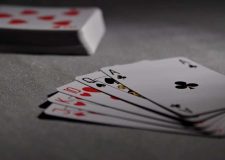Tide Mills on a Summer’s Evening

July, 2022, hot, hot, hot!
The ‘Discovering the Wildflowers at Tidemills’ event had been moved by the Wild Havens Sussex (conservation) group to the evening as they did not wish to be fried by the sun and ‘this way we get to see the sunset and the skylarks’.
Good move, in my humble opinion.

I walked from Bishopstone Station, down past the manicured gardens to the busy junction, with its close cropped verges, then on through the much wilder cycle path to the car park at Tidemills, where my quest for rare and native species of wildflower began in earnest. The vegetation changes dramatically as you move from the cyclepath, through the marsh and derelict mill buildings to the sea; starting with chalkland, moving through the boggy bits by the inlet and what could be thought of as rocky terrain, to the salty pebbles of the beach. There was so much diversity that I had trouble deciding where to start. I chose to ignore the trees, which I assumed had been planted by whoever organised the cyclepath, and looked for things that appeared to be truly wild. Special thanks to Ann Bonar and Alois Kosch for their wildflower books, designed for young enthusiasts and published last century. Without them, I could only identify a few key species, despite having taught a course on ecology! Plenty of white brambles and tall grasses in seed, vetch, mallow, Hawke’s beard, thistles and the delicately lilac-veined white flowers of hedge bindweed down here, all typical of the hedgerows of East Sussex.

Moving further on, a delicate, four petaled, white flower in amongst the grasses, which I believe is called ‘Runch’ in some parts, then some beautiful purple mallow, wafting in the gentle breeze down near the marshy inlet. Not a single bee to be seen.
Down by the remains of the mill buildings the herbage was mostly nettles, brambles and the more common hedgerow and grassland plants, but mostly nettles, their dark green leaves and the occasional white flower offset by the red of the bricks beautifully.

There were some nice dogs and their walkers, who smiled and said ‘Hello’, then some who did not. Near a wall, this interesting species, which may be thyme-leaved sandwort, or not (Old Man’s Beard is more likely). Also here, nestled in amongst the masonry and brambles, a teasel in flower. I had forgotten how delicate and lovely the flowers are.

Then, just by the railway line, this magnificent cluster of yellow-headed spears (possibly spearwort) was seen, interspersed with more mallow, rising up like a mustard coloured cloud (one of the wild mustards is also likely, especially this close to dwellings).
Across the railway line, just a short walk to the beach, only the hardiest of salt resistant species can grow. Still, Hawke’s beard by the sea wall was showing just how hardy it can be. The odd clump of ragwort grows amongst the salt tolerant sea kale, along with more grasses and beautifully copper-brown seed heads (possibly Valerian).

Still no bees, though I did see wasps and flies by the bins.

I met a couple and their dog on the bench, who told me how wonderful and unspoiled the beach is here, compared to the continental beaches they frequent more regularly. They told me about all the diverse groups of people that use the beach. To be fair, it is mostly used by dog owners, but big families with massive picnics, swimmers, surfers and kayaks are welcome too. I had obviously missed people in the conservation group; no one on the beach was even looking at the vegetation.

I was aware that I had missed a bit, in my haste to get to the beach I had walked straight past it. Between the railway line and the beach was a concrete area, with sand dune on each side. I had seen some people cycling along this path and, on closer inspection, found some parsley-like white umbels that could be yarrow or angelica, a clump of wild peas and, best of all, the little, yellow, orchid-like flowers of the ground hugging bird’s foot trefoil. This is a good indicator that the habitat is truly wild and, outside of East Sussex, is very rare.

This patch has the greatest variety of yellow flowers; tansy, ragwort, buttercups, Mullein and saxifrage, to name a few. The buttercups were closing their petals for the night, which made Google Lens come up with some interesting ideas as to what they could be. It seemed to be a ‘wild flower mix, yellow’ patch to me, as if someone had scattered their seed in years gone by to train the kiddies.

There was something near here that looked like another type of orchid, a gentle purple tinge to the flowers, ground hugging and pretty. Again, Google Lens was a bit confused. It seems to like poor conditions, which suggests it is not native to me.

All this time, there were no bees to be seen, a source of great discomfort to me as I know the efforts being made by the local council are to encourage bees, nature’s main pollinator. With the swifts overhead and the seagulls calling in the distance, the sun was rapidly disappearing and I decided to head for town. It was quite close to the dock that I passed a purple buddleia bush, some brambles and some wonderful bright yellow sea poppies, where I saw two bees. The first was on the brambles, the second on the poppies. The flash of white on its tail told me the species of bumble bee and I left, satisfied with my haul of wild flower photos and a long walk in the fresh air at one of Newhaven’s greatest assets and best kept secrets.
Words by Yolanda Herdsman




















